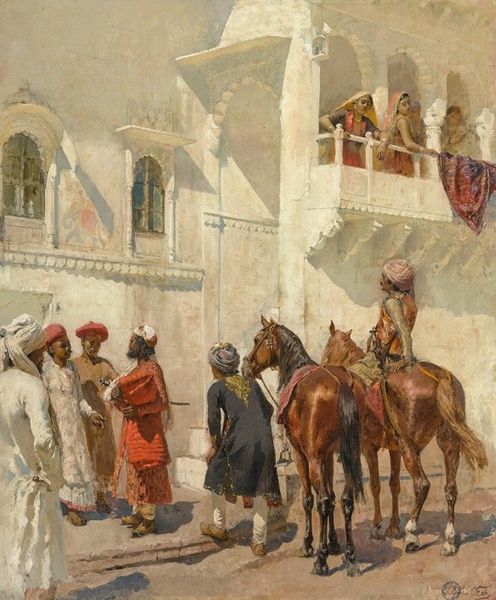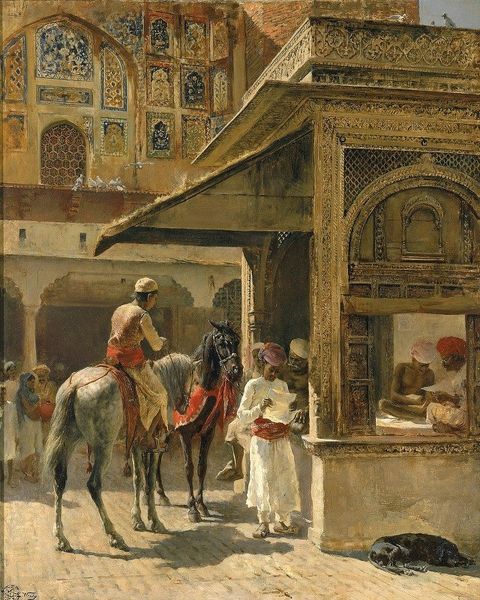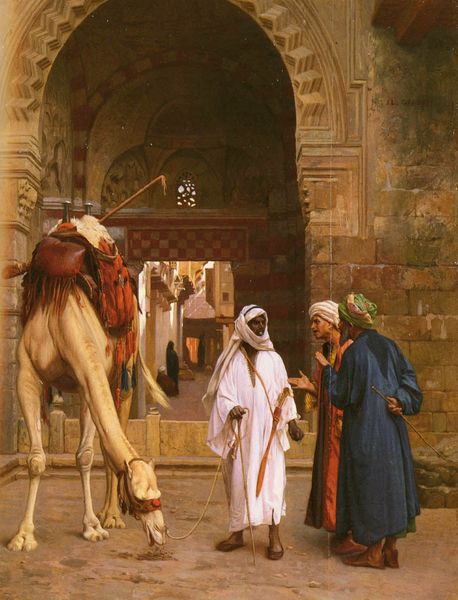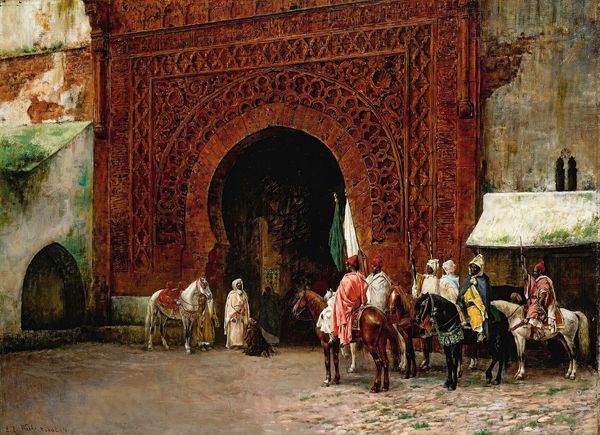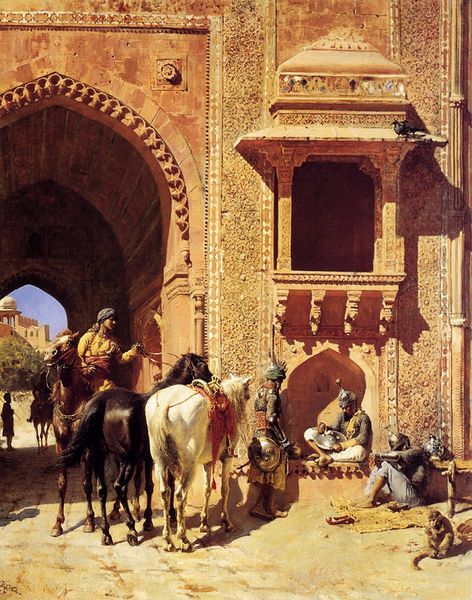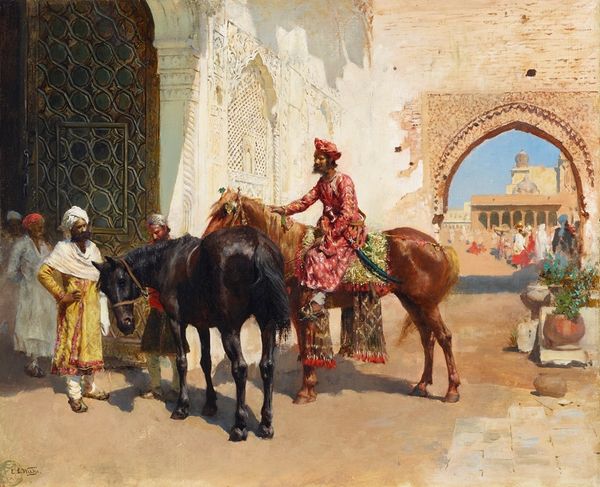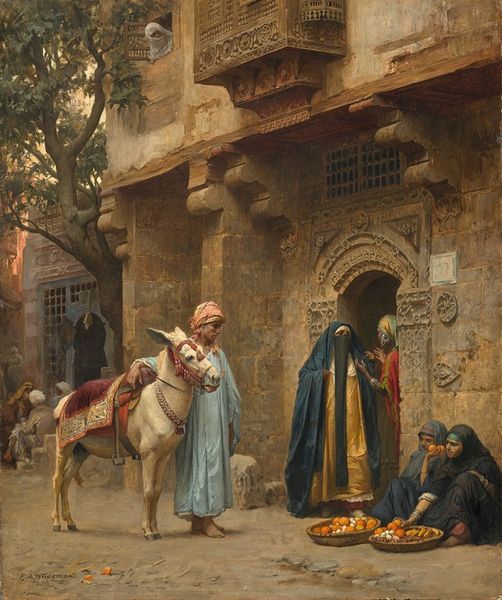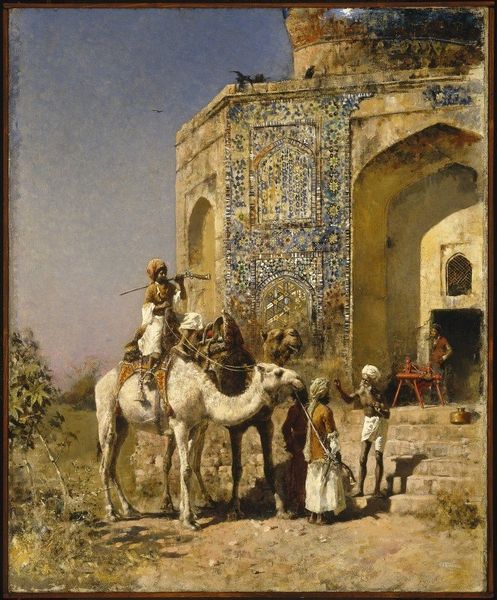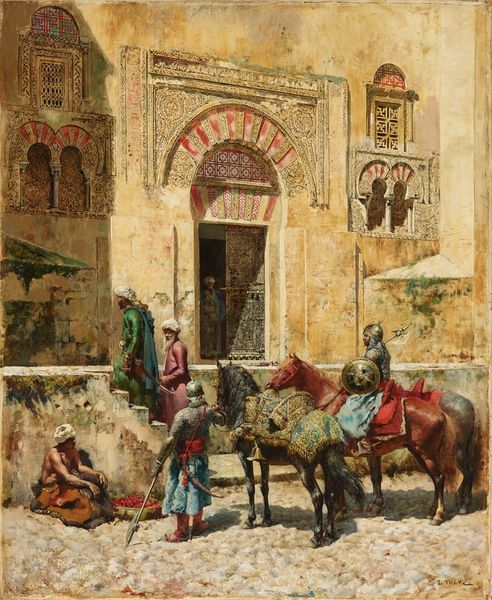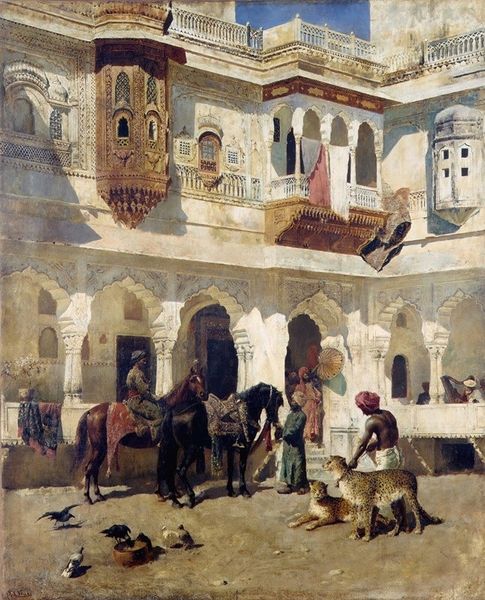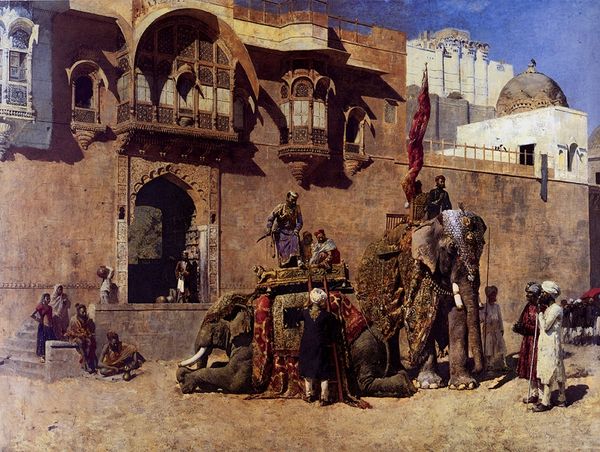
painting, oil-paint
#
portrait
#
animal
#
painting
#
oil-paint
#
landscape
#
oil painting
#
group-portraits
#
orientalism
#
horse
#
painting painterly
Dimensions: 55.3 x 46.4 cm
Copyright: Public domain
Editor: We're looking at Edwin Lord Weeks' "Blue Tiled Mosque At Delhi, India," an oil painting currently in a private collection. I'm struck by how it romanticizes the scene. How should we interpret Weeks' perspective here? Curator: It's crucial to situate Weeks and this painting within the broader context of Orientalism. How does Weeks, as a Western artist, visually construct this scene in Delhi for a Western audience? What assumptions might he be making? Editor: It feels like he’s exoticizing the local people and the architecture, highlighting the 'otherness' for a European gaze. But doesn't that potentially flatten a complex reality? Curator: Precisely. We must consider how this representation impacts our understanding. Notice how he focuses on the picturesque—the clothing, the animals, the detailed tilework. Whose story isn't being told here? Consider the power dynamics inherent in this act of observation and translation. Editor: I see what you mean. It prompts me to think about the voices missing from this artwork; the laborers who likely constructed the mosque, and their absence in this romantic depiction. What responsibility does an artist have when representing other cultures? Curator: It's a continual negotiation, isn’t it? And that is the crucial question. Is Weeks attempting cultural understanding, or perpetuating colonial fantasies? What can contemporary viewers do to resist such fantasies? Editor: Understanding this artwork through the lens of Orientalism really opens it up for more critical reflection. Thanks for guiding me through this perspective! Curator: Indeed, and by recognizing these power dynamics, we can start to decolonize the narrative surrounding art like this and look for narratives which question it.
Comments
No comments
Be the first to comment and join the conversation on the ultimate creative platform.
